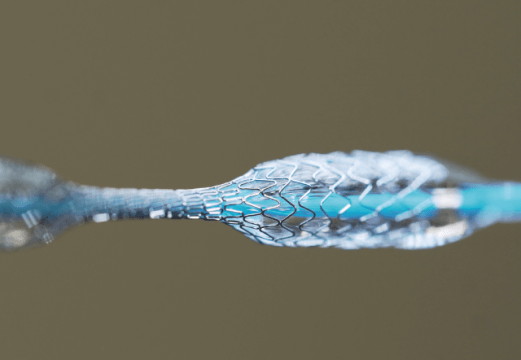A lesion ≥50% in the left main coronary artery (LMCA) is considered severe, according to various scientific societies, regardless of the presence of symptoms or ischemia, due to the extent of myocardium at risk. In such cases, revascularization is indicated.

In many patients, lesions in this section of the coronary artery have severe calcification, which complicates complex percutaneous coronary intervention (PCI) due to inadequate stent expansion, thus increasing the risk of restenosis and unfavorable outcomes.
While rotational atherectomy is complex and can be associated with complications, intravascular lithotripsy (IVL) has proven useful. However, there is limited information available on the application of this technology in the LMCA.
Researchers conducted a retrospective analysis on 184 patients with severely calcified LMCA lesions who underwent LMCA PCI with IVL.
Mean patient age was 76 years, and 69.4% of subjects were men. Among the analyzed population, 91% had hypertension, 46% had diabetes, 45% had impaired renal function, 6% were on dialysis, 35% had peripheral vascular disease, 23% had chronic obstructive pulmonary disease (COPD), 17% had a history of stroke, and 42% had heart failure. About 33% had undergone previous myocardial revascularization surgery. Ejection fraction was 49%.
Read also: IN.PACT Outcomes at 5 Years.
The most common clinical presentation was acute coronary syndrome (43.4%), followed by stable coronary syndromes (34.6%), and, less frequently, unstable angina.
The location of the LMCA lesion was most commonly distal, involving the bifurcation. According to the Medina Classification, the most common lesion pattern at the bifurcation was 1.1.1, followed by 1.1.0, and—to a lesser extent—0.1.1, and 0.1.0.
Pre-dilation was used in 83% of cases. About 18% of patients required rotational atherectomy prior to IVL, and post-dilation after stent implantation was performed in 76% of cases. The minimum luminal area significantly increased by the end of the procedure (4.1±1.3 vs. 9.3±2.5 mm2, P <0.001).
Read also: ERCTO Registry: Current Results for Percutaneous Treatment of Chronic Total Occlusions.
At 30 days, the rate for major adverse cardiac events (MACE) was 8.8%; the mortality rate was 7.2%, the myocardial infarction rate was 3.3%, and no patients underwent target-vessel revascularization (TVR).
Myocardial infarction with or without ST-segment elevation, heart failure, and COPD were predictors of MACE.
Conclusion
Lithotripsy-assisted PCI of calcified lesions was safe and had high technical success, confirming its usefulness as an effective treatment for these challenging lesions.

Dr. Carlos Fava.
Member of the Editorial Board of SOLACI.org.
Original Title: Retrospective Multicenter Analysis of Intravascular Lithotripsy Use During Calcified Left Main Coronary Artery Percutaneous Coronary Interventions.
Reference: Robert F. Riley, et al. Journal of the Society for Cardiovascular Angiography & Interventions 3 (2024) 101213 https://doi.org/10.1016/j.jscai.2023.101213.
Subscribe to our weekly newsletter
Get the latest scientific articles on interventional cardiology





